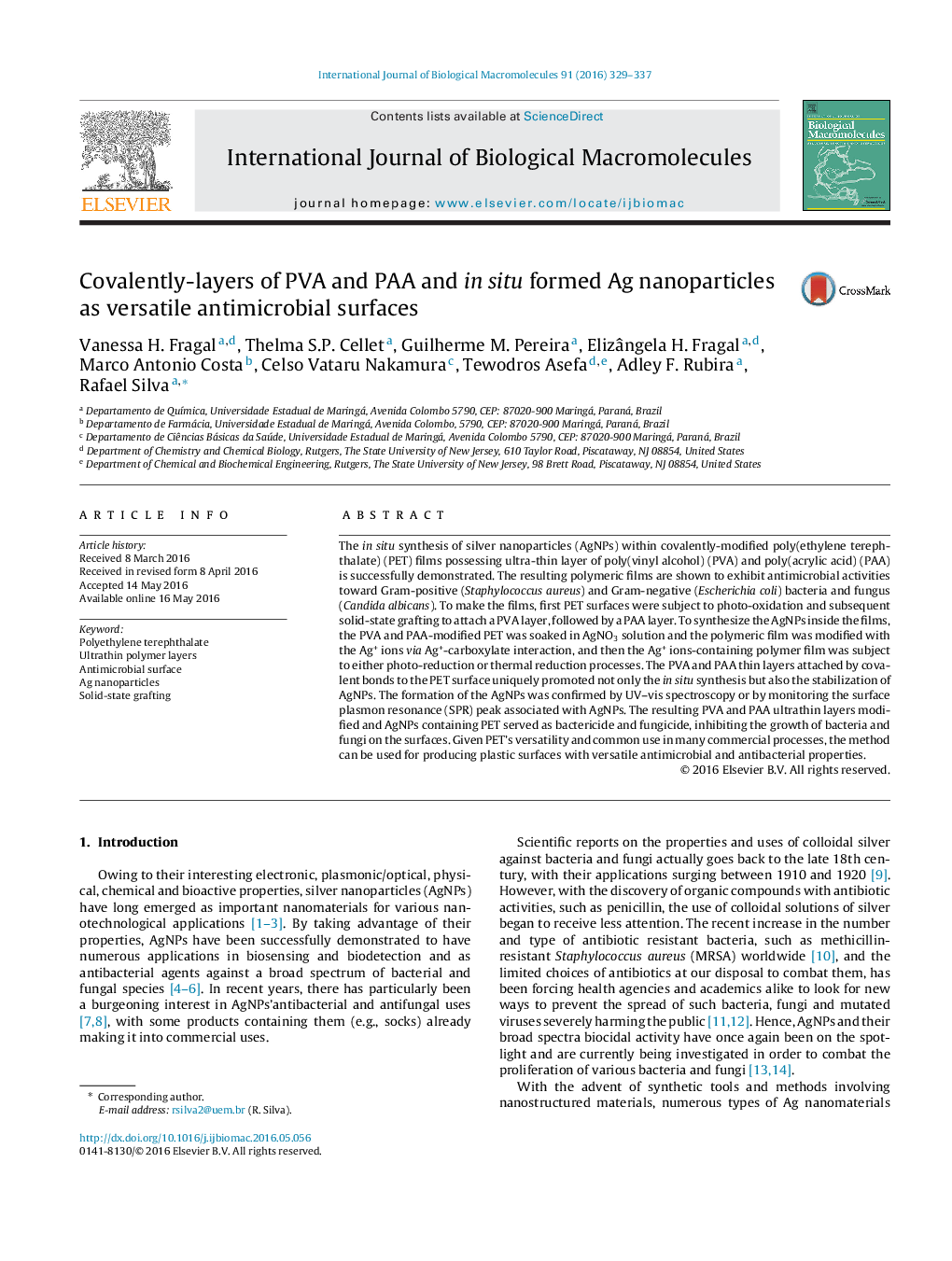| Article ID | Journal | Published Year | Pages | File Type |
|---|---|---|---|---|
| 1985634 | International Journal of Biological Macromolecules | 2016 | 9 Pages |
The in situ synthesis of silver nanoparticles (AgNPs) within covalently-modified poly(ethylene terephthalate) (PET) films possessing ultra-thin layer of poly(vinyl alcohol) (PVA) and poly(acrylic acid) (PAA) is successfully demonstrated. The resulting polymeric films are shown to exhibit antimicrobial activities toward Gram-positive (Staphylococcus aureus) and Gram-negative (Escherichia coli) bacteria and fungus (Candida albicans). To make the films, first PET surfaces were subject to photo-oxidation and subsequent solid-state grafting to attach a PVA layer, followed by a PAA layer. To synthesize the AgNPs inside the films, the PVA and PAA-modified PET was soaked in AgNO3 solution and the polymeric film was modified with the Ag+ ions via Ag+-carboxylate interaction, and then the Ag+ ions-containing polymer film was subject to either photo-reduction or thermal reduction processes. The PVA and PAA thin layers attached by covalent bonds to the PET surface uniquely promoted not only the in situ synthesis but also the stabilization of AgNPs. The formation of the AgNPs was confirmed by UV–vis spectroscopy or by monitoring the surface plasmon resonance (SPR) peak associated with AgNPs. The resulting PVA and PAA ultrathin layers modified and AgNPs containing PET served as bactericide and fungicide, inhibiting the growth of bacteria and fungi on the surfaces. Given PET’s versatility and common use in many commercial processes, the method can be used for producing plastic surfaces with versatile antimicrobial and antibacterial properties.
